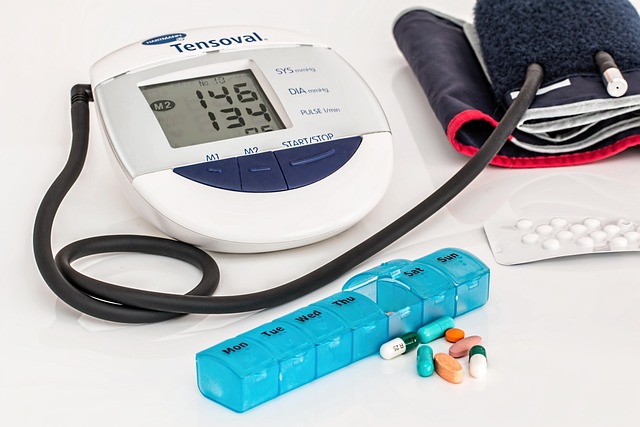How Erectile Dysfunction Is Commonly Treated
Erectile dysfunction might be addressed through lifestyle changes, counseling, or medical therapies based on individual needs. Treatment approaches vary depending on underlying factors. Understanding these options can help clarify how healthcare providers manage this condition.

Erectile dysfunction represents a significant health concern that impacts physical intimacy, emotional well-being, and overall quality of life. While the condition can stem from various physical and psychological factors, modern medicine offers numerous evidence-based treatment options. Recognizing that each individual’s situation differs, healthcare providers typically recommend personalized approaches based on underlying causes, severity, and patient preferences.
Erectile Dysfunction Treatments and Therapy Options
Medical interventions for erectile dysfunction have advanced considerably over recent decades. Oral medications known as phosphodiesterase type 5 inhibitors remain among the most prescribed first-line treatments. These medications work by enhancing blood flow to penile tissue, facilitating the physiological response necessary for achieving and maintaining firmness during sexual activity. Healthcare providers typically evaluate cardiovascular health before prescribing these medications, as they can interact with certain heart medications.
Beyond oral medications, other pharmaceutical approaches include injectable medications administered directly into penile tissue and urethral suppositories. While these methods may seem invasive, they offer alternatives for individuals who cannot use oral medications due to contraindications or insufficient response. Testosterone replacement therapy may be recommended when hormone deficiency contributes to the condition, though this approach requires careful monitoring and is only appropriate for confirmed low testosterone levels.
Treatment Options for Erectile Dysfunction Explained
Vacuum erection devices represent a non-pharmaceutical mechanical option that creates negative pressure to draw blood into penile tissue. These FDA-approved devices consist of a cylinder, pump mechanism, and constriction ring that maintains firmness once achieved. While requiring some practice and planning, these devices avoid systemic medication effects and can be used as needed without daily regimens.
Penile implants offer a surgical solution for individuals who have not responded to other treatments. These devices, surgically placed within penile tissue, can be inflatable or malleable. While this option involves surgical risks and recovery time, it provides a permanent solution with high satisfaction rates among those who choose this path. The decision typically follows extensive consultation with urological specialists.
Psychological counseling and sex therapy address erectile dysfunction rooted in anxiety, stress, relationship conflicts, or past trauma. Even when physical factors contribute, psychological support can enhance treatment outcomes by addressing performance anxiety and communication patterns. Couples therapy may be particularly beneficial when relationship dynamics play a role.
Managing Erectile Dysfunction with Lifestyle Changes
Lifestyle modifications form a foundational component of erectile dysfunction management, particularly when cardiovascular health, metabolic conditions, or lifestyle factors contribute to the condition. Regular physical activity improves cardiovascular function, enhances blood flow, and supports healthy hormone levels. Studies indicate that moderate to vigorous exercise several times weekly can significantly improve erectile function, especially in men with sedentary lifestyles.
Dietary patterns influence vascular health and metabolic function, both critical for erectile function. Diets emphasizing vegetables, fruits, whole grains, lean proteins, and healthy fats while limiting processed foods, excessive sugar, and saturated fats support cardiovascular health. Weight management proves particularly important, as obesity correlates strongly with erectile dysfunction through multiple pathways including hormonal changes, reduced blood flow, and increased inflammation.
Smoking cessation represents one of the most impactful lifestyle changes for improving erectile function. Tobacco use damages blood vessels, reduces circulation, and accelerates vascular aging. Similarly, limiting alcohol consumption and avoiding recreational drugs can improve erectile function, as these substances interfere with nervous system signaling and vascular response.
Non Surgical Erectile Dysfunction Treatments and Causes
Understanding the underlying causes of erectile dysfunction guides treatment selection. Vascular conditions, including atherosclerosis, hypertension, and diabetes, account for a substantial proportion of cases by limiting blood flow necessary for erectile function. Neurological conditions affecting nerve signaling, hormonal imbalances, and medication side effects represent additional physical causes. Psychological factors including depression, anxiety, and stress can independently cause or exacerbate erectile dysfunction.
Non-surgical treatments address these varied causes through multiple mechanisms. Medications targeting vascular function remain highly effective for vascular-related erectile dysfunction. Hormone optimization addresses endocrine causes. Psychological interventions target mental health contributions. This multi-faceted approach often yields better outcomes than single-intervention strategies.
Shockwave therapy has emerged as a newer non-invasive option that uses low-intensity sound waves to stimulate blood vessel growth and improve penile blood flow. While research continues regarding optimal protocols and long-term effectiveness, early studies show promise for certain patient populations. Platelet-rich plasma injections represent another emerging treatment under investigation, though more research is needed to establish efficacy and safety profiles.
| Treatment Category | Examples | Typical Approach |
|---|---|---|
| Oral Medications | PDE5 Inhibitors | Taken as needed before activity |
| Injectable Treatments | Alprostadil Injections | Self-administered into penile tissue |
| Mechanical Devices | Vacuum Erection Devices | Used as needed with constriction ring |
| Surgical Options | Penile Implants | Permanent surgical placement |
| Lifestyle Interventions | Exercise, Diet, Smoking Cessation | Ongoing daily modifications |
| Psychological Support | Counseling, Sex Therapy | Regular sessions addressing mental factors |
Treatment costs vary considerably based on the approach selected, insurance coverage, and geographic location. Oral medications may range from minimal copays with insurance to several hundred dollars monthly without coverage. Generic versions have reduced costs significantly. Mechanical devices typically involve one-time purchases ranging from a few hundred to over a thousand dollars. Surgical implants represent the highest upfront cost, potentially ranging from fifteen to twenty-five thousand dollars, though insurance may cover portions when medically necessary. Counseling sessions vary by provider and insurance status, typically ranging from fifty to two hundred dollars per session. Prices, rates, or cost estimates mentioned in this article are based on the latest available information but may change over time. Independent research is advised before making financial decisions.
Comprehensive Approach to Treatment
Successful erectile dysfunction management often requires combining multiple strategies tailored to individual circumstances. Initial evaluation by healthcare providers typically includes medical history review, physical examination, laboratory testing, and discussion of psychological factors. This comprehensive assessment identifies contributing factors and guides treatment recommendations.
Patient education plays a vital role in treatment success. Understanding how treatments work, realistic expectations regarding timelines and outcomes, and the importance of adherence improves results. Open communication with healthcare providers about treatment effectiveness, side effects, and concerns allows for adjustments and optimization.
Partner involvement can enhance treatment outcomes, particularly when relationship factors contribute to the condition. Discussing expectations, concerns, and treatment plans together can reduce performance anxiety and improve intimacy. Healthcare providers may recommend couples counseling alongside medical treatments for comprehensive care.
This article is for informational purposes only and should not be considered medical advice. Please consult a qualified healthcare professional for personalized guidance and treatment.
Moving Forward with Treatment
Erectile dysfunction treatment has evolved to offer numerous effective options addressing diverse underlying causes. From pharmaceutical interventions and mechanical devices to lifestyle modifications and psychological support, individuals can work with healthcare providers to identify approaches matching their specific situations. The availability of multiple treatment pathways means that most men can find effective solutions, though patience and open communication with healthcare providers remain essential. By understanding available options and addressing contributing factors comprehensively, individuals can take informed steps toward restoring function and improving quality of life.




